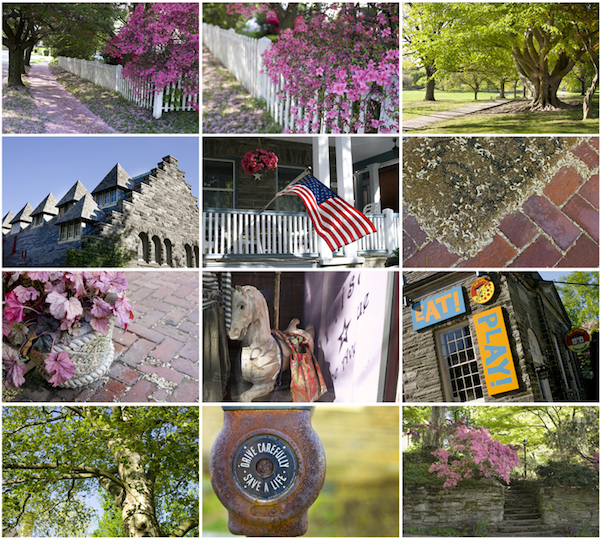Learning to shoot from the hip
posted Sunday, May 3, 2015 at 12:53 PM EST

This is an exercise I wish we would have done when I was in photo school. I did it myself this week and I learned something about my camera that I know is going to stick. It’s simple, easy and fun, and I really think—regardless of what level of photography you’re at—you should give it a try.
I went for a walk around my neighborhood with tape over my viewfinder. I couldn’t look through the camera to compose my pictures so I had to guess. In a very short time, I got fairly good at getting close to what I wanted.
Before I went for the walk I did a little experimentation to get myself in the ballpark. I did my initial test with a 50mm lens and I found the results so interesting that I played around with wider and longer lenses, too. (The longest lens I used was a 70mm. This “blind” approach wouldn’t be practical with seriously long lenses.)
I took a picture of my neighbors garage door. I looked at the picture and then, I held my arms up in front of me and marked the two sides of the picture. I memorized the position my arms were in. That’s my 50mm position.

I found the arms idea to be really helpful in predicting what the camera would see when I finally went for the blind walk. You could do this with all of your lenses and memorize two or three arm positions that would make a big difference for you when you’re trying to decide if you should change lenses.
It was actually fairly easy getting good at predicting where the picture was getting cropped on the sides. The tricky part was getting the sides AND the top and bottom right. In other words, aiming the camera at what I wanted the center of the picture to be was much more difficult. That takes some practice.
This apparently impractical approach could have some practical implications for street shooters. When you’re in public with a camera, you draw a lot of attention to yourself the moment you bring the camera to your face. If you’re just holding it in front of your chest—not at your face— everything is obviously much more casual.

Also, guessing at your compositions can produce a spontaneous feeling in some situations that you may like more than your usual carefully considered framing of a scene. It’s something worth keeping in mind.
This exercise did make me wonder how many of the classic street photos now hanging in museums were taken by people who were just giving it their best guess, in the interest of trying to fly under the radar a bit. If you give this experiment a try, and amaze yourself with how close you can get, I think you will conclude that the answer is, at least, some of them.
(An exceptional educator and a world-class photographer, Nick Kelsh is the founder of How To Photograph Your Life, an excellent source of affordable photography training and tips. Nick’s courses can be conducted by yourself in your own time, or with feedback from Nick and your fellow students. If you appreciated this article and want to improve your photography, visit How to Photograph your Life and sign up for a course today!)